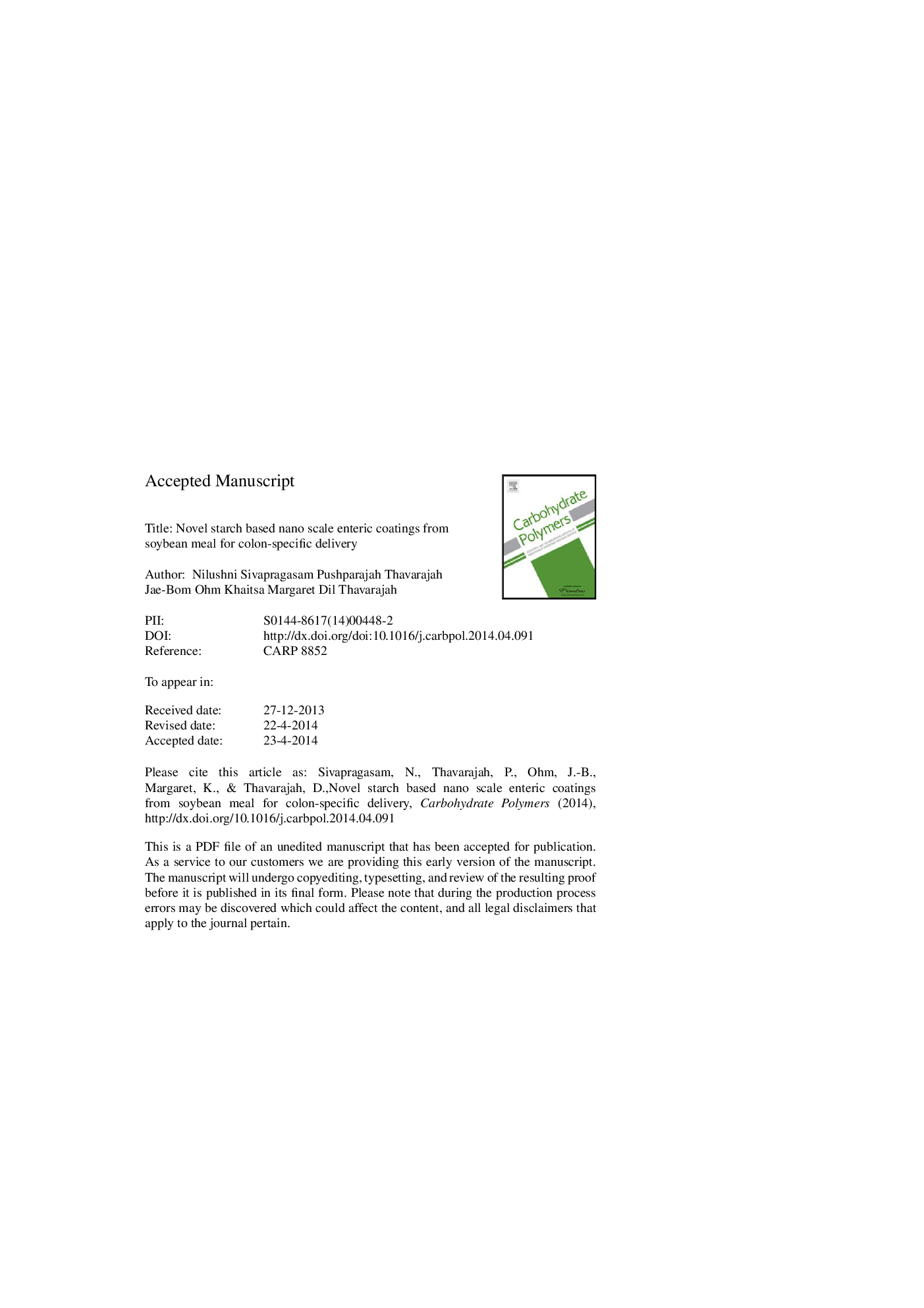| Article ID | Journal | Published Year | Pages | File Type |
|---|---|---|---|---|
| 7791447 | Carbohydrate Polymers | 2014 | 24 Pages |
Abstract
Soybean meal was used to isolate resistant starch and produce nanoparticles, which could be potential coating materials for colonic nutrient and drug deliveries. The nanoparticles were in 40 ± 33.2 nm ranges. These nanoparticles were stable under simulated human physiological conditions. The degrees of dissolution in both stomach and intestinal conditions were less than 30%. Furthermore, the nanoparticles were less susceptible to pancreatic enzymatic digestion (20%), which was also evidenced by the co-existence of B-type crystalline pattern. In addition to the dissolution and digestion studies in the upper gastrointestinal tract, the nanoparticles were subjected to in vitro fermentation by Bifidobacterium brevis and Lactobacillus casei. Both species showed an increase in growth and activity, while producing short chain fatty acids: acetate, propionate, and butyrates in varying amounts. Overall this study clearly demonstrated a novel method that can be used for colon-specific delivery of bioactive compounds such as drugs and nutrients.
Related Topics
Physical Sciences and Engineering
Chemistry
Organic Chemistry
Authors
Nilushni Sivapragasam, Pushparajah Thavarajah, Jae-Bom Ohm, Jae-Bom Ohm, Khaitsa Margaret, Dil Thavarajah,
